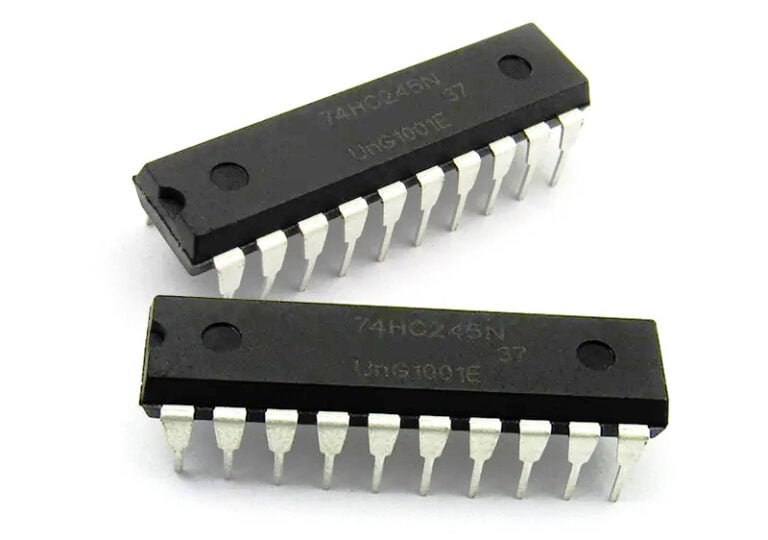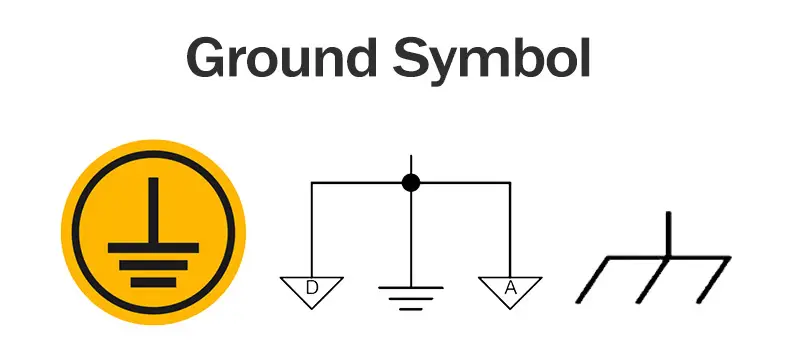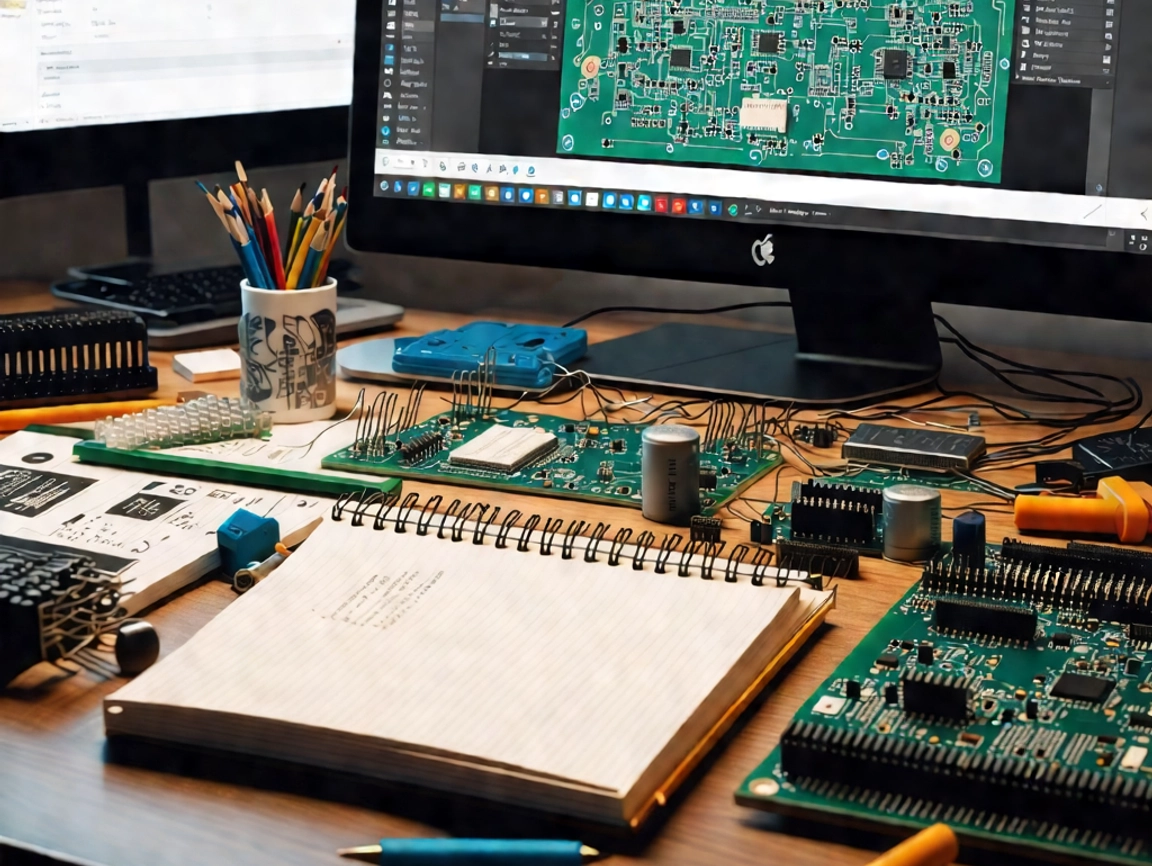What is 74HC245?
74HC245 is an octal transceiver used for asynchronous data transfer between two devices. Furthermore, it supports data transmission at different voltage levels. The internal structure of the chip consists of two amplifiers. Therefore, it can perform two-way communication. This two-way communication is achieved through a signal applied on the direction control pin.
74HC245 Pin Configuration
The 74HC245 is a 20-pin integrated chip that contains two amplifiers, namely A and B. The pin configuration is shown in the figure below:
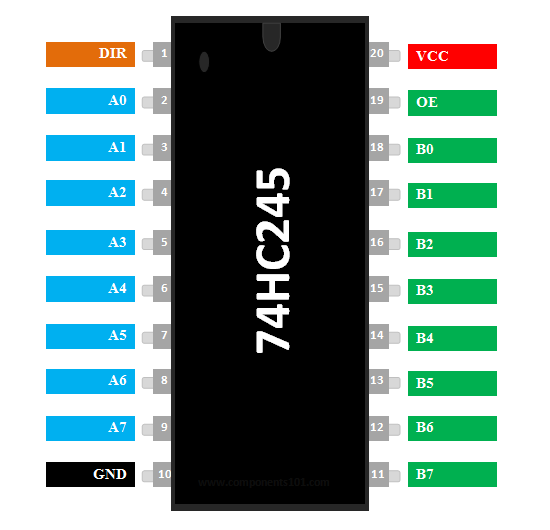
Pin configuration description:
- Pin1—direction control pin: The direction control pin (DIR) is used to determine the communication direction, whether the data is from amplifier A to B or from B to A.
- Pin2 to 9 – A0 to A7: These are the pins of Amplifier A, which can act as inputs and outputs depending on the direction control input.
- Pin0 – Ground: Connect this pin to the ground of the circuit.
- Pin11 to 18 – B0 to B7: These eight pins belong to amplifier B, which can act as input and output depending on the direction control input.
- Pin19—Active Low Output Enable Pin: It controls the output by enabling or disabling the input, this pin is used for cascading.
74HC245 Specification
| Specification | Value |
|---|---|
| Supply Voltage | 2V to 6V |
| Output Voltage equals Vcc | Vcc |
| Minimum Input Voltage | 0.8V |
| Maximum Input Voltage | 4.2V |
| Minimum Output Voltage | 1.9V |
| Maximum Output Voltage | 5.4V |
| Output Current | 35mA |
| Quiescent Current | 80μA |
| Non-State Output Current | 10uA |
| Low Input Current | 1A |
| Output Drive Capability | Drives 15 LSTTL loads |
| Propagation Delay | 13 ns |
| Package | 20-pin SO20, SSOP20, TSSOP20, and DHVQFN20 |
74HC245 Function
The 74HC245 is an integrated circuit chip that is often used as a logic level translator or bus buffer. It features 8-bit data lines and bi-directional transfers, suitable for converting signals from one logic level to another for communication between different logic families or levels. Its main functions include:
Logic Level Translation
The ability to take a signal from one logic family (such as TTL) and convert it to the level required by another logic family (such as CMOS). This enables different types of logic circuits to be connected and communicate within the same system.
Bus buffer
It can be used as a bus buffer to transfer data from one bus to another, maintaining the stability and integrity of the signal. This is very important for data transfer and communication between multiple devices or modules.
Two-way Data Transmission
With two-way transmission function, data transmission can be performed between input and output. This is useful in applications that require bidirectional data transfer, such as bus communication and connection of bidirectional data lines.
Data Line Drive
With strong output drive capability, it can provide enough current and voltage to drive the receiver or other logic circuits.
74HC245 Working Principle
74HC245 is widely used in wireless communication and network applications. Every output of this IC can be 0 or 1, that’s why it is designed for digital use only. It can be used on a CPU board to buffer data on a bidirectional bus or to drive a nominal load. You can use this IC for bidirectional communication in applications that require low input current, low power consumption, and the above features.
Sometimes the two pieces of hardware communicating have different operating voltages. In these cases a voltage divider or any other logic level converter can be used. Development boards such as MSP432, MSP420, BeagleBoard and Raspberry Pi run on 3 volt logic and many analog sensors, digital sensors, LCD displays, TFT displays operate on 5 volt logic, we can use this IC to interface these development boards with this IC. This approach is not inefficient for two-way communication. Therefore, in such applications, the 74HC245 can be used.
Generally speaking, the 74HC245 principle is responsible for the communication from bus A to bus B or bus B to bus A depending on the direction control input. When this input is low, data at the Amplifier B input flows to Bus A. Data at the input of Amplifier A will flow to Bus B when a high logic level is applied. This IC has another control input called Output Enable (OE). The OE input isolates the two buses from each other. Applying a high logic level on this input causes the output to be in a high impedance state and disables the output, it is used to disable and enable the output.
74HC245 Application Circuit
The application circuit of 74HC245 is prevalent in various digital electronic projects, such as interfacing microcontrollers with other devices, such as LCD displays, sensors, motors, and other peripherals. It can also be used to isolate different parts of a system or to interface different voltage levels.
Here is a simple example of how the 74HC245 can be used in a circuit:
Let’s say you have a microcontroller that operates at 5V and you need to communicate with a device that operates at 3.3V. You can use the 74HC245 to interface between the two voltage levels. The microcontroller can output data to the A pins of the 74HC245, which will be buffered and transmitted to the B pins at a lower voltage level. Similarly, data from the 3.3V device can be input into the B pins and transmitted to the microcontroller at the higher voltage level.
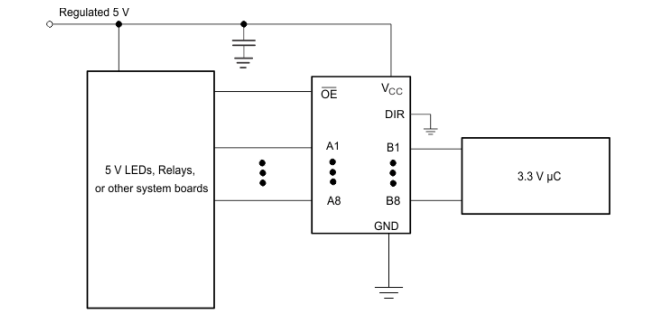
74HC245 Package
The 74HC245 is available in a variety of 20-pin packages, including DIP20, SO20, SSOP20, TSSOP20, and DHVQFN20 packages. A common TSSOP 20 package design is given below:
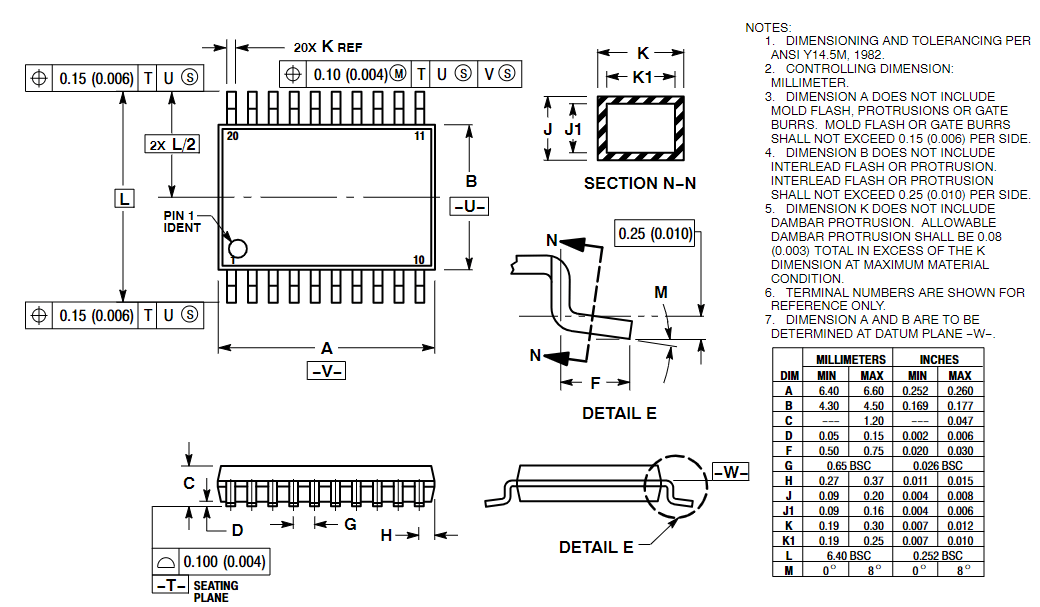
Conclusion
74HC245 is a commonly used logic level converter and bus buffer, which can perform signal conversion and data transmission between different logic levels, and it is widely used in the field of digital system design and communication.

